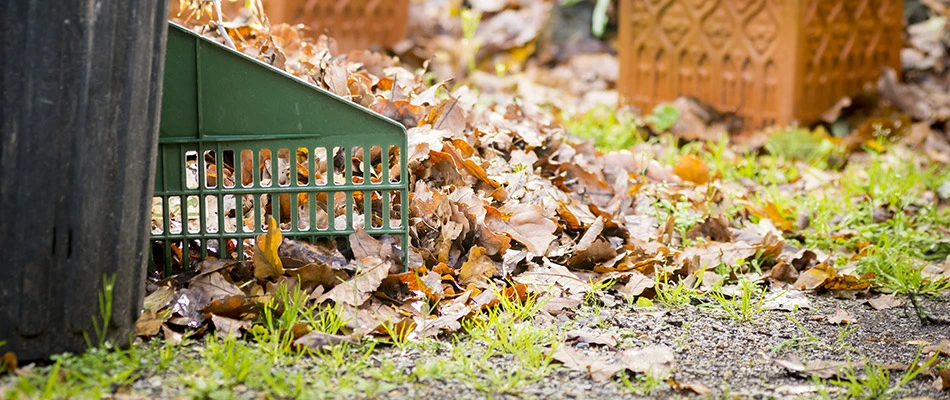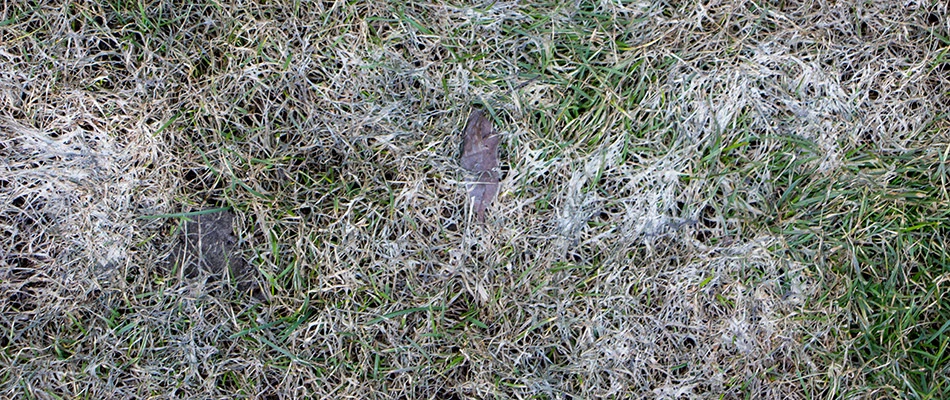While melting snow can be pretty, it can also uncover many secrets. One of them is a lawn disease called snow mold. This disease is caused by two types of fungi that are commonly referred to as gray and pink snow mold. This disease will leave your lawn with patches that are covered in either a grayish or pinkish web-like coating. Cool-season grasses are commonly affected by snow mold, but lawn care and maintenance practices can effectively prevent your grass from falling victim to this lawn disease. Keep reading to learn more about snow mold and how you can prevent it!
What is snow mold?
If you notice patches in your grass that look covered in a web-like coating after the snow melts, your turf may be affected by snow mold. It is a lawn disease caused by two types of fungi:
- Gray snow mold or Typhula blight
- Pink snow mold or Fusarium patch
These fungi live in your soil year-round but are only activated during the winter when the temperatures start to drop below 50 degrees consistently. They are also easily distinguishable, as gray snow mold is characterized by white to gray patches while pinkish patches indicate pink snow mold.
Whether your lawn is affected by gray or pink snow mold, the patches they create are unsightly for your property. However, pink snow mold can be more damaging to your lawn since it can also kill the roots of your grass. Your grass is likely to grow back even after the damage from gray snow mold, but a lawn affected by the pink snow could require lawn care to recover.
Snow mold can also trigger allergies, which can lead to symptoms such as sneezing or a runny nose.
Ways to Prevent Snow Mold

Fortunately, snow mold is preventable. Keeping your grass healthy is the first step to ensuring it can resist lawn diseases such as snow mold. Here are some more ways you protect your grass from snow mold:
- Remove leaves in the fall: Molds love moisture, and any leaf pile on your yard in the fall will give the fungi that cause snow mold an ideal spot to thrive. Schedule a fall cleanup service with leaf removal to keep your lawn free from leaves and debris where snow mold can start. Plus, eliminating leaves in the fall will protect your grass from pests that can surprise you in the spring!
- Give your grass a fall fertilizer treatment: A robust lawn is resilient and will not easily succumb to lawn diseases. Giving your grass a fall fertilizer treatment will provide it will all of the nutrients that it will need to grow strong before winter hits.
- Ensure your lawn has proper drainage: Poor drainage means your grass is constantly damp and subjected to moisture which is a breeding ground for snow mold!
The Types of Grass That Get Affected by Snow Mold
Snow mold affects cool-season grasses like tall fescue, perennial ryegrass, and Kentucky bluegrass. You can find all three of these grass types in Michigan, so it's best to be proactive and take the steps we have laid down above to protect your lawn.
Prevent snow mold on your lawn by scheduling our lawn care services.
At Big Lakes Lawncare, we offer a variety of high-quality lawn care services that will help protect your lawn from snow mold. We offer these services to residential, commercial, and HOA properties in Macomb, Shelby, Chesterfield, and surrounding areas in Michigan. Give us a call today at (586) 200-0855 to schedule our services! We look forward to working with you to help you get the healthy lawn that you deserve.




Comments (0)
Thanks for your comment!
Thanks for your feedback! Your comments have been successfully submitted! Please note, all comments require admin approval prior to display.
Error submitting comment!
There is a problem with your comment, please see below and try again.